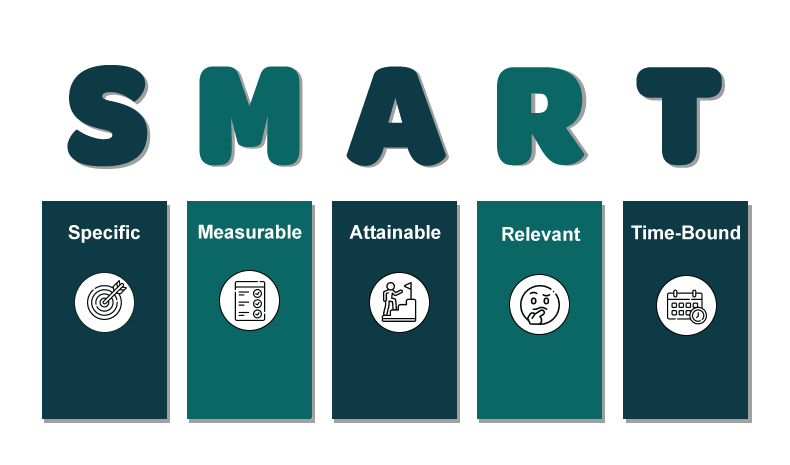6.5: Goal Setting
Goal setting is an essential step in the UDL implementation process. While “goals help us focus our energy and actions, measure our progress and…achieve purposeful results” (Ministry of Education, 2013, p. 1), it is not always easy for post-secondary educators to determine institutional IDEA priorities or uncover entrenched systemic challenges that can inform goals.
Furthermore, institutional EDI, accessibility or Indigenization goals may not fully meet your learning and teaching environments needs. Careful review of your teaching and a proactive evaluation of your learners’ needs, in combination with institutional strategic plans and goals, will provide an informed start to your UDL goal setting.

SMART goals are ideal when you wish to create comprehensive objectives that can be actualized. For those new to SMART goals, you will find a description of the acronym below:
- Specific: What, exactly, do you wish to accomplish?
- Measurable: How will you know when you have reached your goal?
- Attainable: Is your goal possible? What actions or supports will be required to reach your goal?
- Relevant: How does this goal align with needs (which can be your needs, the needs of your learners, the needs of your institution, etc.)?
- Time-bound: When are you planning to reach your goal? What is the timeline for your goal?
“If inclusion has happened in one classroom, anywhere in the world, then it is not a dream. It’s possible, and it is a matter of choice.”
– Jody Carr, former Minister of Education and Early Childhood Development, New Brunswick (as cited in Katz, 2012)
As post-secondary educators in Ontario, we need to not only choose inclusion, equity and access for our diverse student populations, but plan for it. Comprehensive goal setting is an ideal way to start your UDL implementation to support removing barriers for yourself and learners. The following learning activity will start you on your goal setting path.
Activity 5: Goal Setting
Identify a current issue or challenge in your post-secondary context relating to AODA, EDI and/or Indigenous Pedagogies. Develop a SMART goal(s) focused on improving or resolving the issue. The learning activities in Modules 3, 4 and 5 may be useful for this activity. You may wish to copy and paste the headings below to begin your notes:
Issue/Challenge:
Relation to AODA/EDI/Indigenous Pedagogies:
Specific – My goal is:
Measurable – My goal will be reached when:
Attainable – To realize my goal I will need:
Relevant – My goal is applicable because:
Time-bound – My goal will be completed by:
You are invited to record your goal(s) in the way that works best for you, which may include writing, drawing, creating an audio or video file, mind map or any other method that will allow you to reflect and refer back to your thoughts.
Alternatively, a text-based note-taking space is provided below. Any notes you take here remain entirely confidential and visible only to you. Use this space as you wish to keep track of your thoughts, learning, and activity responses. Download a text copy of your notes before moving on to the next page of the module to ensure you don’t lose any of your work!
References
Katz, J. (2012). Teaching to diversity: The three-block module of universal design for learning. Portage & Main Press
Ministry of Education. (2013). Ideas into action for school and system leaders: Bulletin – 2013 No:04. http://www.edu.gov.on.ca/eng/policyfunding/leadership/ideasintoactionbulletin4.pdf

